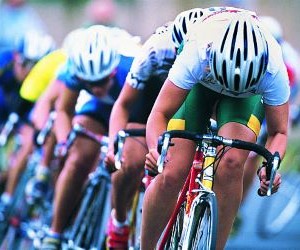Learn how to deal with punctures on long rides with prevention tips, repair techniques, and smart gear choices to keep rolling without stress.
HOW CAN I IMPROVE MY CYCLING SPEED?
Improving cycling speed is a common goal for riders, whether training for competition, group rides, or personal challenges. Speed isn’t just about stronger legs—it’s the result of optimized training, efficient gear use, aerodynamics, nutrition, and recovery. This article breaks down proven strategies for increasing speed, helping cyclists ride faster and smarter with sustainable gains.

Training methods for speed
Cycling speed is built on structured training that develops endurance, power, and efficiency. Random rides won’t deliver consistent gains—progress requires intentional drills that target specific energy systems. Riders should combine interval training, endurance sessions, and cadence drills to improve overall performance.
Interval training for power
High-intensity interval training (HIIT) pushes riders above their comfort zone, stimulating adaptations that increase speed and power output. Short, repeated bursts followed by recovery improve both aerobic and anaerobic capacity.
4–6 sets of 3–5 minutes at 90–110% of FTP with equal rest.
Sprint intervals: 8–12 seconds all-out effort, 2–3 minutes recovery.
Mix seated and standing sprints for real-world simulation.
Cadence and pedal efficiency
Efficient pedaling translates to smoother, faster riding. High-cadence drills (100–110 rpm) train neuromuscular coordination, while low-cadence strength intervals (60–70 rpm on climbs) build muscular endurance. Together, these drills help riders adapt to varied terrain without wasting energy.
Consistency is key—two to three structured speed-focused sessions per week deliver measurable results within months.
Equipment and aerodynamics
Beyond training, gear and bike setup have a significant impact on cycling speed. Aerodynamics, rolling resistance, and bike weight all affect performance, sometimes more than raw power output. Small adjustments can yield big time savings without extra physical effort.
Optimizing your bike
Upgrading to aerodynamic wheels, reducing unnecessary accessories, and ensuring proper bike maintenance improve efficiency. Tire choice matters too—modern tubeless systems with low rolling resistance compounds can increase average speed noticeably.
Invest in aero handlebars and helmets.
Keep your drivetrain clean and lubricated.
Choose gear ratios suited to your terrain to maintain cadence.
Rider position and aerodynamics
A rider’s body accounts for the majority of aerodynamic drag. Lowering the torso, tucking elbows, and maintaining a flat back can add 2–3 km/h without additional power. Professional bike fits help balance aerodynamics with comfort, preventing fatigue on long rides.
Training to sustain an aero position is as important as adopting one. Riders should practice maintaining form during endurance rides to reap consistent benefits.
Nutrition, recovery, and mindset
Speed gains don’t just come from training and equipment—fueling, recovery, and mental resilience are equally critical. Neglecting these elements often stalls progress, even with a solid training plan.
Fueling for performance
Cyclists should consume 30–60 grams of carbohydrates per hour on long rides to maintain energy and power output. Pre-ride meals with low-glycemic carbs and adequate hydration set the stage for sustained speed. Post-ride recovery meals with carbs and protein accelerate muscle repair.
Eat balanced meals with complex carbs, lean protein, and healthy fats.
Stay hydrated with electrolytes to avoid performance dips.
Experiment with fueling strategies during training, not race day.
Recovery and mindset
Muscles adapt and grow stronger during recovery, not just during training. Prioritize 7–9 hours of sleep, schedule rest days, and incorporate stretching or yoga. Mental strategies like visualization, goal setting, and self-talk help sustain motivation during tough efforts and races.
Ultimately, improving cycling speed is about synergy: structured training, optimized equipment, smart fueling, proper recovery, and mental focus. When all elements align, speed improvements become not only possible but sustainable.
YOU MAY ALSO BE INTERESTED






